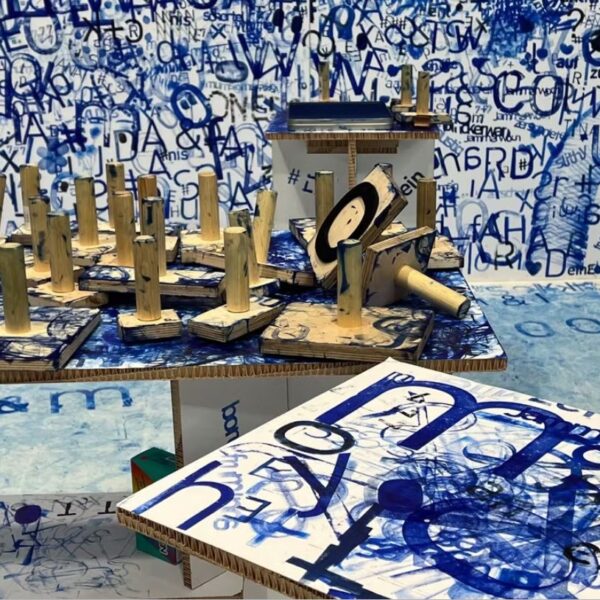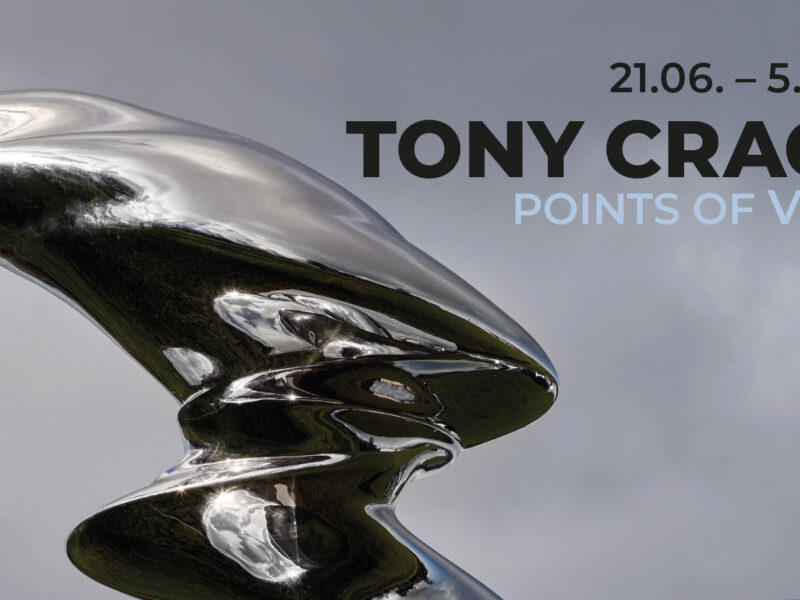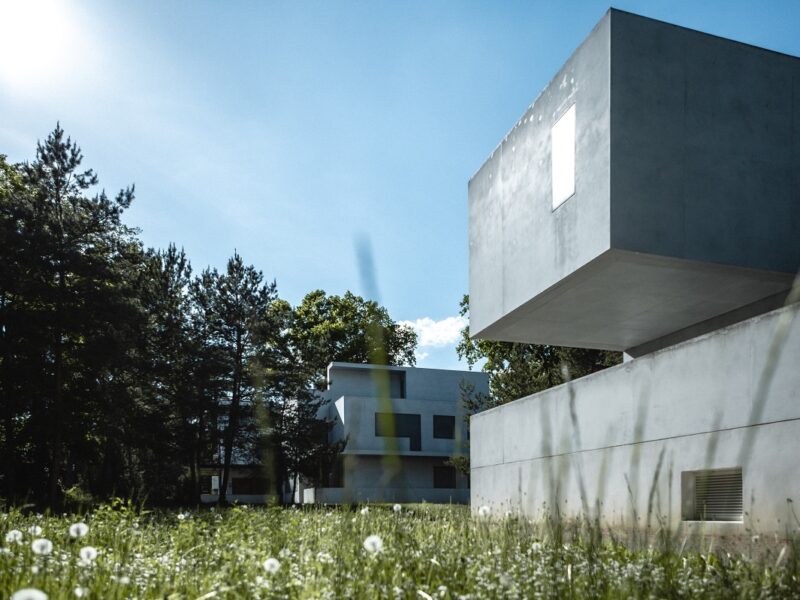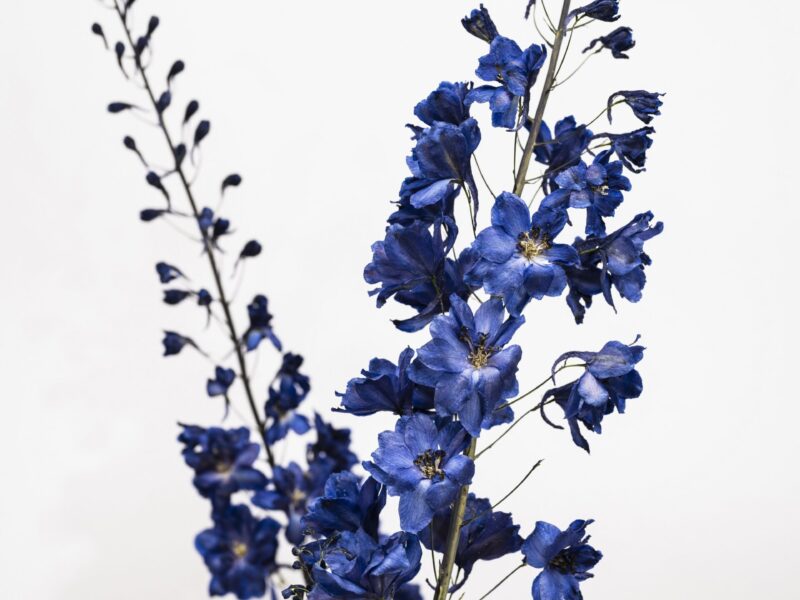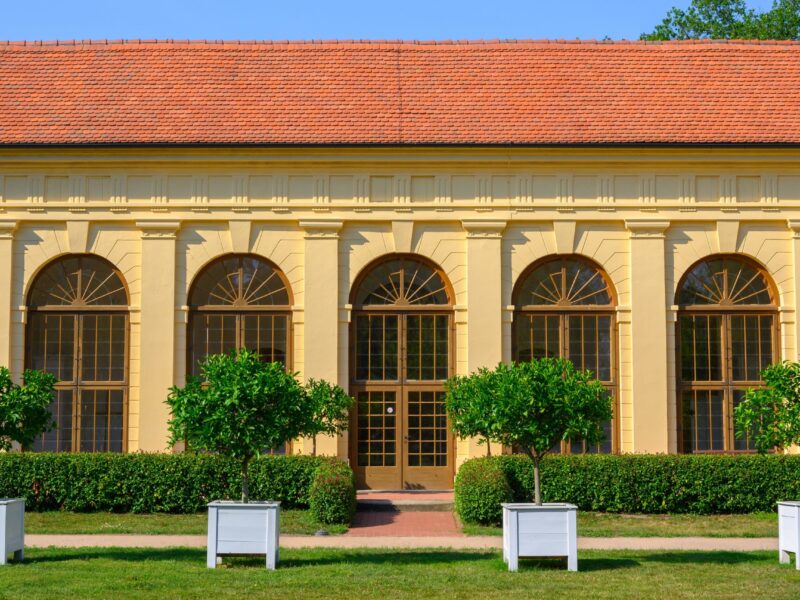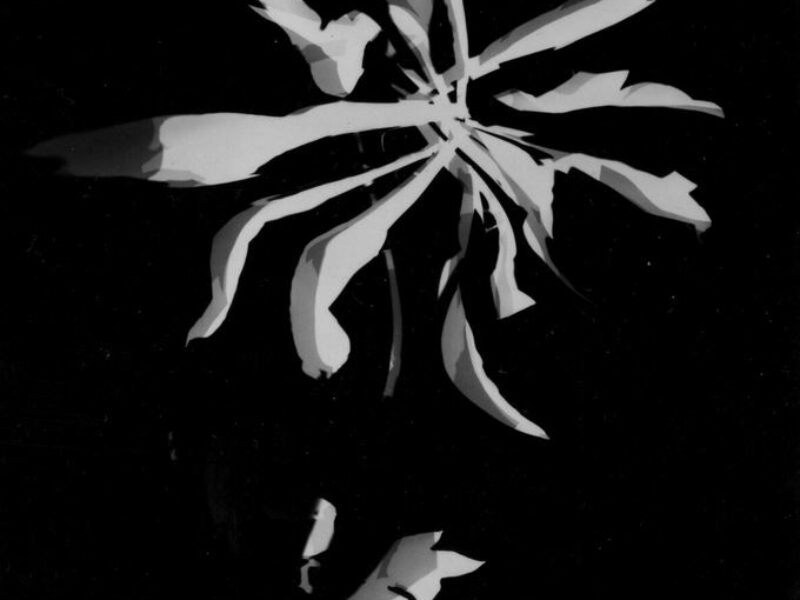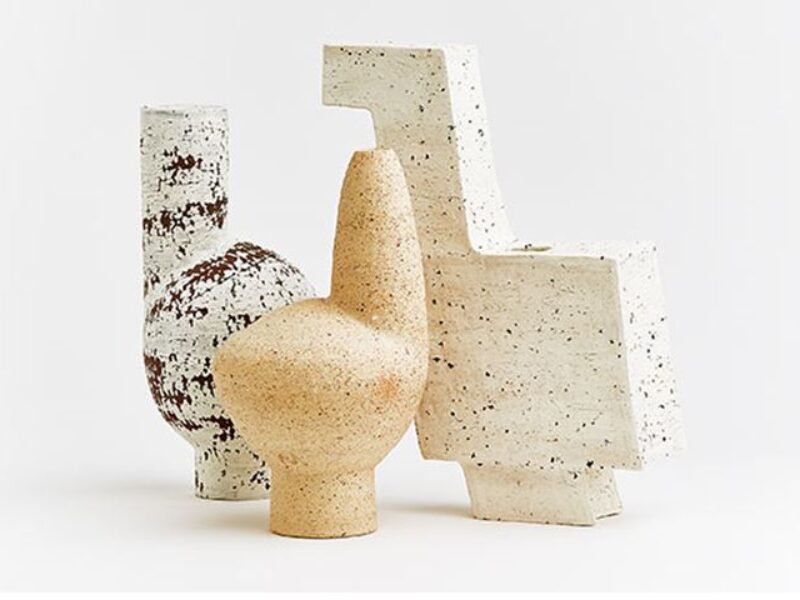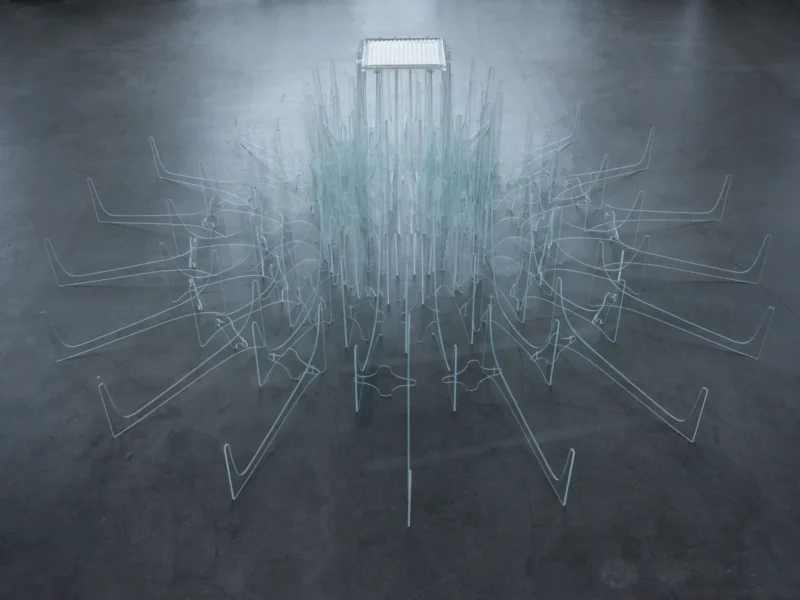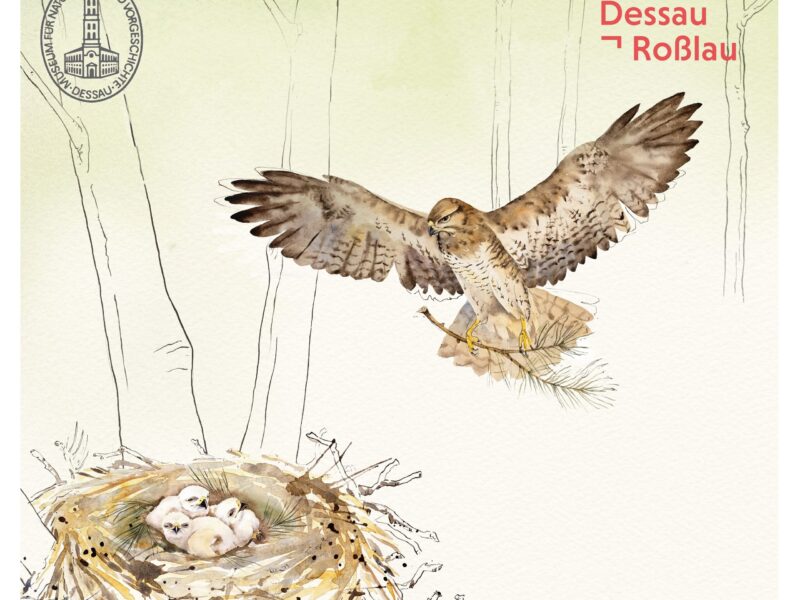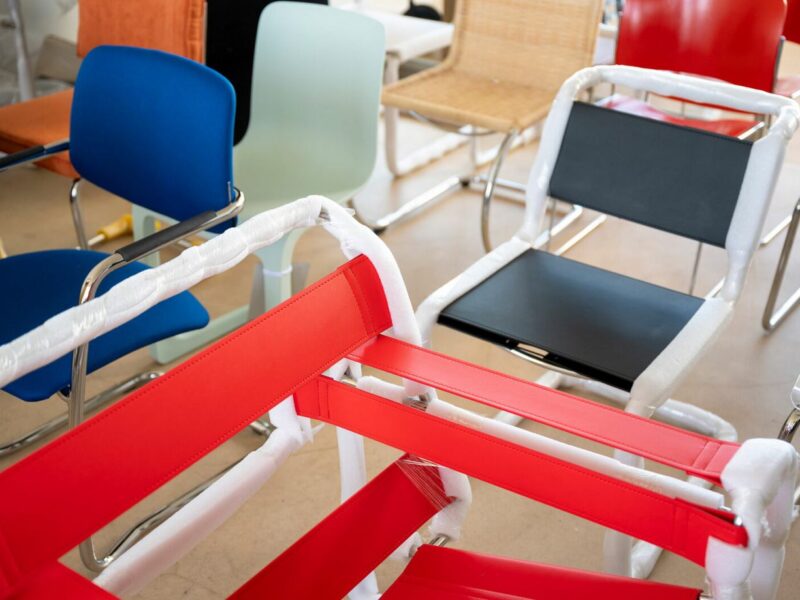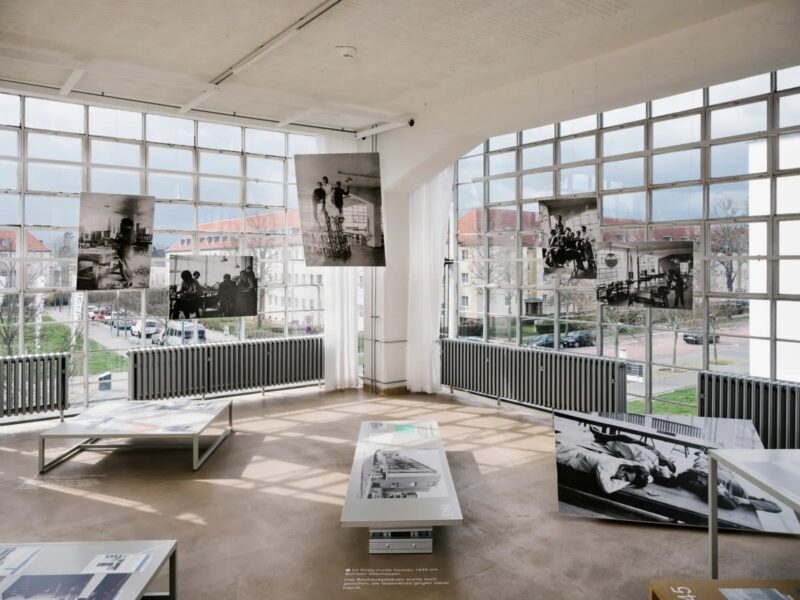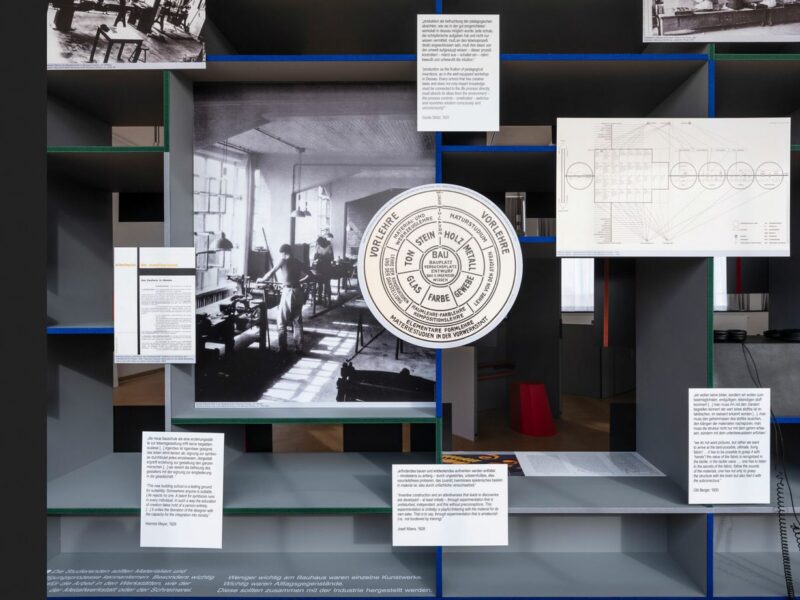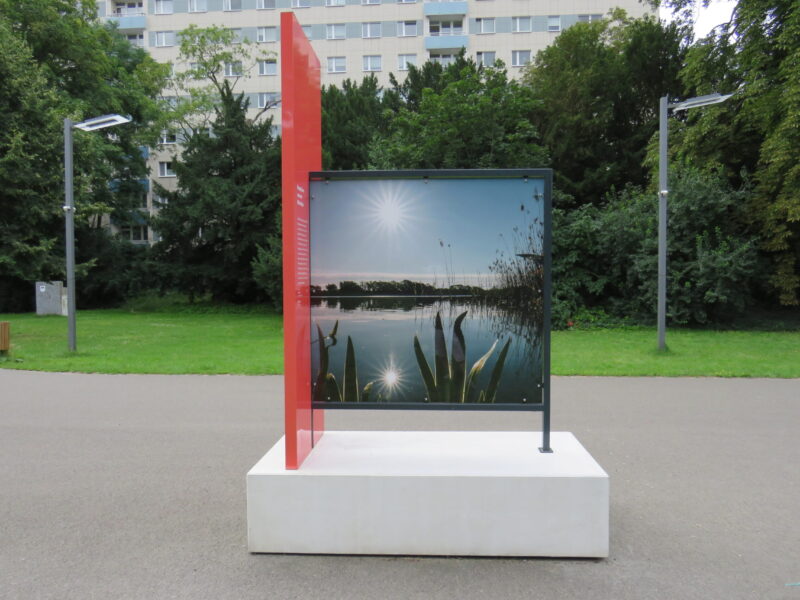Tue – Sun, 10 am – 5 pm
kunstHALLE Dessau
Ratsgasse
06844 Dessau-Roßlau
Anhaltischer Kunstverein Dessau e.V.
Hobuschgasse 5
06844 Dessau-Roßlau
Mail: info@anhaltischer-kunstverein.de
Exhibition in the kunstHALLE
Blueberry Sause - Whoever comes joins in
Stamps of all letters, including special characters, syllables, endings and more, are offered in numerous different sizes and shapes.
The three stamp colors vary between sky blue, turquoise and ultramarine. You can express your wishes and dreams as you wish, which you can address to your surroundings, Dessau and the world on this evening
stamp on a large wall in the art gallery.
Through your efforts, a huge cloud of cheerful blue will grow together on this wall to form an impressive collaborative work.
Between ink pads and blueberry juice, there are many reasons to exchange ideas about what is on the wall.
21.06. – 05.10.2025
daily 11.00 a. m. – 6.00 p. m.
Closed on Tuesdays
Anhalt Art Gallery Dessau
Orangery at Georgium Palace and Park Georgium
Puschkinallee 100, 06846 Dessau-Roßlau
Anhalt Art Gallery Dessau
Puschkinallee 100, 06846 Dessau-Roßlau
Anhalt Art Gallery Dessau
Tony Cragg. Points of View.
The British sculptor Tony Cragg (*1949) is one of the most internationally recognised contemporary artists. His works can be found in major collections worldwide and increasingly in public spaces.
This summer, visitors will have the opportunity to experience a selection of his larger sculptures from the last 30 years at the UNESCO World Heritage Site Georgium Palace and Park in Dessau. Part of the show will take place in the interior of the Orangery, a neutral white room. The second part of the exhibition can be discovered at various points in the park and in the palace. Here, the works enter into a dialogue with their architectural and natural surroundings.
Cragg’s scientific interests are reflected in his parallelisation of artistic development processes with evolutionary processes in nature. Reflection on the material he uses plays a central role in his artistic thinking. Since the 2000s, his increasingly expansive works have combined figuration and abstraction, monumentality and seemingly weightless movement.
The regular admission ticket to the museum entitles the holder to enter the special exhibition in the Orangerie at no extra charge.
The exhibition is being funded by the state of Saxony-Anhalt.
01.06.2025 – 11.01.2026
daily 10 am – 5 pm (Mar – Oct)
Tue – Sun 10 am – 5 pm (Nov – Feb)
Entrance fee Haus Gropius
Haus Gropius
Ebertallee 57
06846 Dessau-Roßlau
bauhaus-dessau.de
Masters' Houses - Gropius House
Margret Hoppe. Pair / Unpair
Margret Hoppe was a resident artist at the Bauhaus Dessau Foundation in 2024. The conceptual starting point of her photographic work was the examination of duplications. In addition to the Muche | Schlemmer House – where the artists in residence live and work – two reference images of the Masters’ Houses form the framework: a photograph by Lucia Moholy and a two-part image by photographer Benjamin Subtil. In correspondence with the Masters’ Houses, in each of which one half of the building is rotated 90 degrees, Hoppe has also rotated the back of the camera 90 degrees, creating double exposures. In her twelve-part series, Hoppe forms pairs. This happens through the double exposure in the pictures themselves or through similarities and neighbourhoods between the shots. At the same time, these pairs are repeatedly uncoupled by single images (unpair).
18.05.2025 – 07.09.2025
Tue – Sun, 10 am – 6 pm (March – Oct)
Tue – Sun, 10 am – 5 pm (Nov – Feb)
Bauhaus Museum Dessau
Mies-van-der-Rohe-Platz 1
(at the Kavalierstraße)
06844 Dessau-Roßlau
Stiftung Bauhaus Dessau
Gropiusallee 38
06846 Dessau-Roßlau
bauhaus-dessau.de
Bauhaus Museum Dessau
Delphinium Maximum
The new exhibition Delphinium Maximum focuses on the delphinium plant and takes an unconventional look at the contemporary and historical relationship between humans and ornamental plants.
For Delphinium Maximum, a variety of delphinium flowers of local and international origin meet contemporary art in an open scenography in the large ground floor area of the Bauhaus Museum Dessau, the Spatial Stage. The artist Sarah Oos presents opulent balloon flower sculptures. Studio photography and still life are central themes in the photographic work of artist Annette Kelm. Luise Marchand’s Muttererde series is about the craft of floristry, the global flower market and working directly with soil and plants. Vases made especially for the exhibition by ceramicist Matthias Kaiser take up the presentation form of the Dutch tulip vase.
13.06.2025 – 15.09.2025
Tue – Sun 09.00 am – 05.00 pm
free entry
Orangerie im Park Luisium
06844 Dessau-Roßlau
Actor network
Orangery in Luisium Park
Types and places, perceive.
In the project “The gray scabiosis and its habitats in the Central German distribution area – preserve – protect – promote” we are committed to valuable but endangered dry grassland species communities.
The exhibition was created in exchange and collaboration with the artists Inken Hemsen and Katrin Röder as well as the cellist Christina Meißner. Inspired by plant species and their habitats, the artists dealt with the species, places and themes of the project in their own unique way. Different perspectives, new ways of seeing and listening have emerged. The works are juxtaposed with information on various aspects such as diversity in the cultural landscape, landscape change, possibilities and limits of species protection. Together we want to invite you to perceive the nature, place and responsibility.
The exhibition “Species and Places, Perceiving.” shows the works created from May 2023 to March 2026 at interesting locations in our project area in Saxony-Anhalt and Thuringia.
11.04.2025 – 02.11.2025
Tue – Sun, 10 am – 6 pm (March – Oct)
Tue – Sun, 10 am – 5 pm (Nov – Feb)
Bauhaus Museum Dessau
Mies-van-der-Rohe-Platz 1
(at the Kavalierstraße)
06844 Dessau-Roßlau
Stiftung Bauhaus Dessau
Gropiusallee 38
06846 Dessau-Roßlau
bauhaus-dessau.de
Bauhaus Museum Dessau
Bauhaus Ecologies
Was the historic Bauhaus interested in ecology? Presumably in a different context than today. The exhibition Bauhaus Ecologies explores approaches to ecological thinking in modern design.
Although the Bauhaus is now also associated with the destructive consequences of modernism, the avant-garde artists of the 1920s were already thinking about the future of nature, the environment, climate and landscape. In their search for cultural forms of expression for modernity, the Bauhaus artists were inspired by various schools of thought, including biocentrism, natural philosophy, holistic fantasies and organicism.
Bauhaus Ecologies shows how ecological considerations were combined with design issues between science and art, technology and design at the Bauhaus. Using exemplary objects from the collection of the Bauhaus Dessau Foundation, the exhibition provides insights into the encounters between crystallography and experimental film, biology and climate-friendly construction, life sciences and abstract art.
Against the backdrop of current discourses on sustainability and climate justice, the project takes a critical look at and reconsiders the history of modern design. A comprehensive accompanying programme in collaboration with local institutions and initiatives offers space for public debate on ecological issues of the past and present in talks, presentations and excursions.
21.03.2025 – 19.10.2025
Tue – Sun, 10 am – 6 pm (March – Oct)
Tue – Sun, 10 am – 5 pm (Nov – Feb)
Bauhaus Museum Dessau
Mies-van-der-Rohe-Platz 1
(at the Kavalierstraße)
06844 Dessau-Roßlau
Stiftung Bauhaus Dessau
Gropiusallee 38
06846 Dessau-Roßlau
bauhaus-dessau.de
Bauhaus Museum Dessau - Intermezzi
Anna Gille + Matthias Kaiser + Experimental Space
At the same time, three new Intermezzi are opening at the Bauhaus Museum Dessau. The Intermezzi are exhibitions within the exhibition: current and historical positions from art and design intervene at three locations within the permanent exhibition and create new approaches and relationships to the legacy of modernism. The Intermezzi in 2025 focus, among other things, on representations of nature in our post-digital age and the material knowledge contained in ceramics and fired objects.
In Intermezzi, Anna Gille shows charcoal drawings of vegetation in analogue and digital landscapes. She stages these in an object installation that is reminiscent of the presentation of devices in apple stores.
The ceramics that Matthias Kaiser produces in his studio are subtle experiments in form and materiality. Their surfaces are often coated with specially produced glazes made from natural materials he has collected himself, such as mussel shells or quartz sand, and are reminiscent of pottery traditions from different cultures.
The experimental space is dedicated to the role and the various relationships between material, music and sound in the artistic processes of the illustrator Anna Gille and the ceramicist Matthias Kaiser. On display are various interactions between sound and material, which become clear in the works of both artists.
28.02.2025 – 19.10.2025
Tue – Sun, 10 am – 5 pm (Nov – Feb)
Mon – Sun, 10 am – 5 pm (Mar – Oct)
Bauhaus Building
Gropiusallee 38
06846 Dessau-Roßlau
Exhibition in the Bauhaus Building
Kang Sunkoo. sacristy
In preparation for the anniversary “To the substance. “Bauhaus Dessau 100” in Kang Sunkoo’s exhibition, relic-like fragments from Bauhaus history become artistic material for a prelude to what is to come. The artist dedicates himself to the quasi-religious, mythically exaggerated charge and veneration of the historic Bauhaus. He also traces the faith in the Bauhaus and links this with his own biography. Kang grew up in Seoul, in the Christian, Buddhist and shamanistic South Korea, and in the Catholic Rhineland.
25.09.2024 – 01.03.2026
We – Sun, 10 am – 5 pm
The Museum is closed in December and January.
Museum of Natural History and Prehistory
Askanische Straße 32
06844 Dessau-Roßlau
Museum of Natural History and Prehistory
Askanische Straße 32
06844 Dessau-Roßlau
Museum of Natural History and Prehistory
Special exhibition “Animal Individual”
Whether sawflies or buzzards: animals deal with their environment individually. Researchers from different disciplines in the Collaborative Research Center NC³ at the Universities of Bielefeld and Münster have examined in more detail how they choose their own ecological niche, adapt to it and change it for various animal species. Their research results are clearly presented in the special exhibition “Animally Individual” on loan from Bielefeld. The exhibition invites visitors to follow in the footsteps of science themselves. At hands-on stations you can find out, for example, how experienced flour beetles protect themselves from disease or how the development of fur seal pups is influenced by the mother’s choice of beach. Research and exhibitions help to better understand animals and their behavior and thus contribute to effective animal and species protection.
permanent exhibition
Tue – Sun, 10 am – 5 pm (Nov – Feb)
Mon – Sun, 10 am – 5 pm (Mar – Oct)
Bauhaus Building
Gropiusallee 38
06846 Dessau-Roßlau
Exhibition in the Bauhaus Building
Yun Yang. More than real
In his work More than real, Jun Yang presents famous Bauhaus furniture of various origins in the historic Bauhaus building. The Vienna-based artist uses various rooms with a precise selection of furniture produced true to the original, translations and free imitations. It addresses the further developments and changes that the design heritage of the Bauhaus, specifically furniture design, has undergone over the past decades. Jun Yang’s work for the Bauhaus Dessau is about interpretations and transfers: from industrial furniture to design icons, to fetishes, to copies and to works of art. With the selection of furniture, Jun Yang rejects a strict concept of authenticity and at the same time invites people to continually renegotiate ideas of authenticity. What is authentic that needs to be preserved?
On the occasion of the centenary of the Bauhaus in Dessau, Tecta and Jun Yang are starting the experiment of developing a new, completely recyclable Wassily edition. The name “Wassily” was introduced in the 1960s by Dino Gavina as a marketing name for the Breuer B3 armchair. Tecta produces the foldable armchair under the name D4.
permanent exhibition
Tue – Sun, 10 am – 5 pm (Nov – Feb)
Mon – Sun, 10 am – 5 pm (Mar – Oct)
Bauhaus Building
Gropiusallee 38
06846 Dessau-Roßlau
Exhibition in the Bauhaus Building
The glass facade at the Bauhaus
The striking steel and glass facade of the workshop wing was a novelty when it was completed in 1926 and for a long time stood for modern building. Since its destruction due to the war in 1945, there have been repeated changes to the building. One of the most important was the reconstruction of the facade as an aluminum-glass construction in 1976. During this time, people learned to appreciate the Bauhaus again. It became (again) a place for design and architectural questions.
The exhibition traces the eventful history of the famous facade. Historical photographs show the interior and everyday life of the training center from the 1920s to the 1980s. Contemporary witnesses from different generations have their say in images and sounds.
permanent exhibition
Tue – Sun, 10 am – 5 pm (Nov – Feb)
Mon – Sun, 10 am – 5 pm (Mar – Oct)
Bauhaus Building
Gropiusallee 38
06846 Dessau-Roßlau
Exhibition in the Bauhaus Building
Bauhaus learning place
The former architecture classroom becomes an exhibition and place for visitors to stay with the “Bauhaus Learning Site”. Against the background and context of the historic Bauhaus Dessau as a school (1926–1932), current forms of learning that are practiced today in the two departments of the Academy and the Curatorial Workshop of the Bauhaus Dessau Foundation are presented here. This includes research and teaching on history and critical reflection of modern and current design discourses as well as mediation and playful-speculative reinterpretations of historical exercises, materials and ideas.
Using a selection of presented projects, visitors to this location are invited to take part in the multi-voiced conversations of these teaching programs, workshops, publications and other formats on the discourse and practice of design.
October 2023 until October 2025
The exact locations of the picture banks can be found on the map on the exhibition page.
If you have any questions, please contact the Tourist Information Dessau.
Downtown
Open Space Gallery
Take your time for a walk through the city and discover the most beautiful places of Dessau-Roßlau as photo impressions on an approximately 3.5 km long circuit between the train station and Kavalierstraße.
In this interesting format, the temporary exhibition presents appealing topics such as urban development, urban history and urban culture.
In the current exhibition, 14 photo banks compare city views from Dessau-Roßlau today with photos from the past 60 years. This results in an exciting testimony to urban development.
The impressive results can be viewed on a walk through the city, can also be experienced digitally and inspire people to visit the original sites.
Click here to go to the exhibition page.
